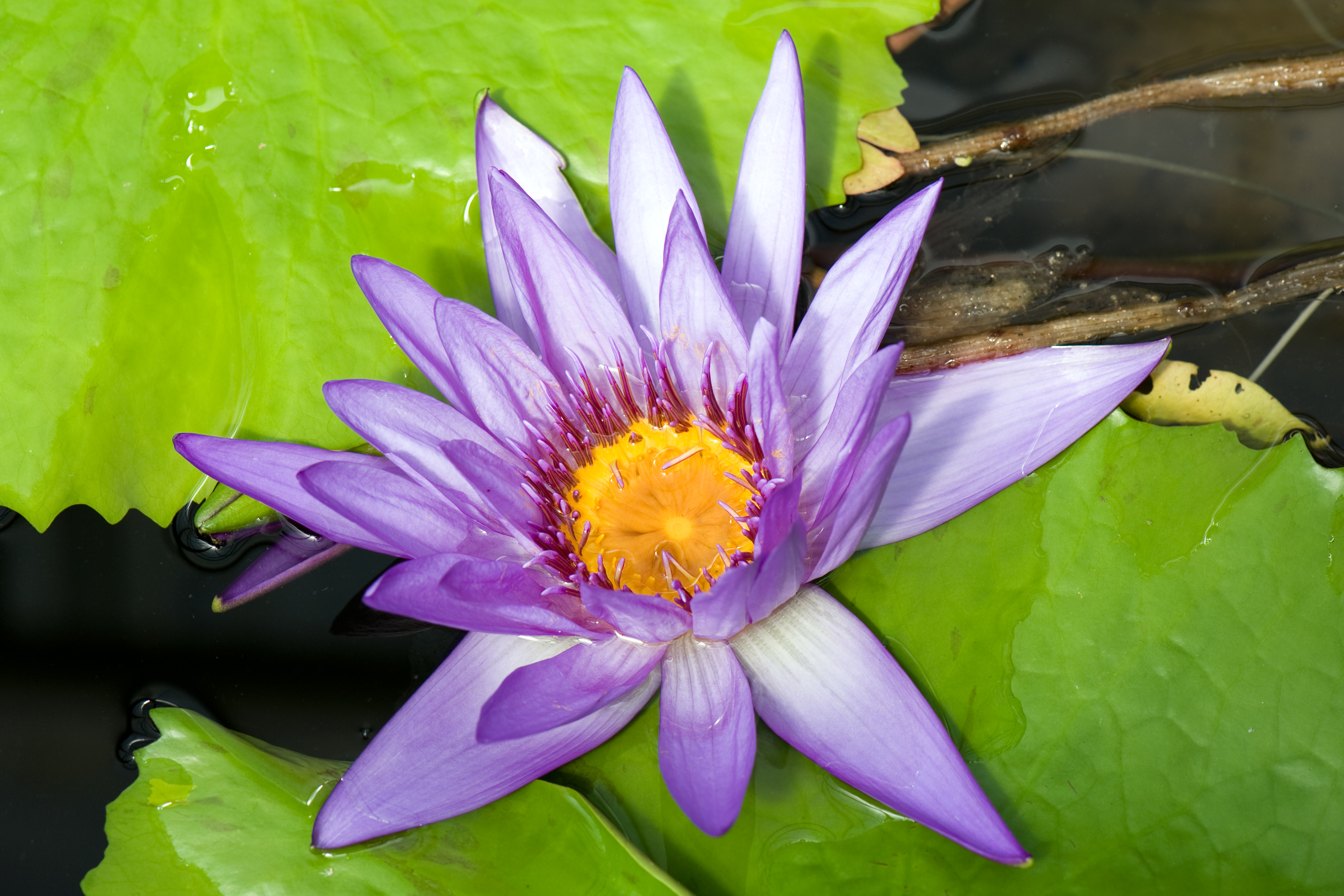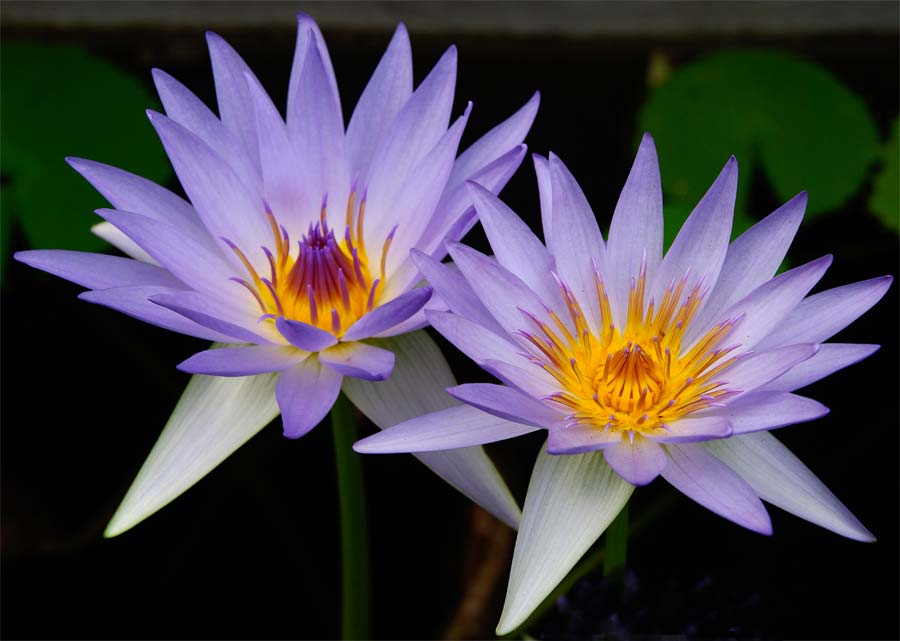Nymphaea caerulea
Nymphaea caerulea
Nymphaea caerulea, also Blue Lotus, is a plant of the genus of water lilies (Nymphaea ). The perennial aquatic plants are widespread in tropical Africa.
Description
Nymphaea caerulea is a perennial water plant. From the thickened tuberous rhizome spring floating on the water surface leaves. The leathery leaves are round to oval, 8-30 cm long and 6-28 cm wide, the leaf margin is entire or slightly wavy. The two lobes forming acute or obtuse; their edges may overlap, run parallel to each other or leave a gap. The upper leaf surface is green and smooth, the bottom is green or reddish. On the underside of the leaf veins can appear.
The flowers are on fleshy stalks a piece about the water surface. The flowers can reach a diameter of 6 to 20 cm, their color is blue or pink. The outer four petals ( sepals ) are green, occasionally marked with reddish edges or reddish stripes or dots. The sepals are oblong -ovate or oblong - lanceolate, their length is 3-8 cm with a width from 1.1 to 2.5 cm. Of the inner petals ( petals ) are 12 to 24 units available, they are oblong - lanceolate, acute or obtuse they end. In some flowers, some features of the petals outer petals on (hence it may differ on the number of petals give ). Is 30 to 100 or even more stamens present, the number of sheets is 12 to 24 fruit The fruit is round with a diameter of 2-4 cm, the seeds are oval and 1.1 mm.
The flowers open in the morning and close in the late afternoon. Overnight, they remain closed to the next day to flourish again. The sepals outboard control the opening and closing rhythm of flowering. If the outer sepals removed, the flower loses its ability to move.
Dissemination
Nymphaea caerulea are common in slow flowing rivers and stagnant waters throughout tropical Africa and in Egypt. Other deposits are located in Yemen, Israel, the species is now extinct. In South America Nymphaea caerulea was naturalized.
Systematics and botanical history
Nymphaea caerulea Savigny in 1798 described the first time scientifically. Within the genus of water lilies (Nymphaea ) it is classified in the subgenus Brachyceras, are in the more tropical water lilies whose flowers open during the day. Verdcourt classified in 1989 some African lily species as a subspecies of the widespread in India Nymphaea nouchali, including Nymphaea caerulea as Nymphaea caerulea var nouchali. An investigation of the family relationship on the basis of DNA showed Nymphaea colorata (Nymphaea nouchali var zanzibarica after Verdcourt ) as close relatives of Nymphaea caerulea.
Use
The flowers of Nymphaea caerulea contain psychoactive substances.
Nymphaea caerulea was already used in ancient Egypt. In the grave of Ramses II dried flowers from Tiger Lotus and Nymphaea caerulea were found. Also be found in numerous representations of the flowers of Tiger Lotus ( Nymphaea lotus ) and Nymphaea caerulea. While the white flowers of the Tiger Lotus decorate drinking vessels, are the blue flowers of Nymphaea caerulea used for ritual vessels and liquids. From this and from the fact that Nymphaea caerulea is presented along with opium and mandrake, includes William A. Emboden that the psychoactive properties were known and have been used.










